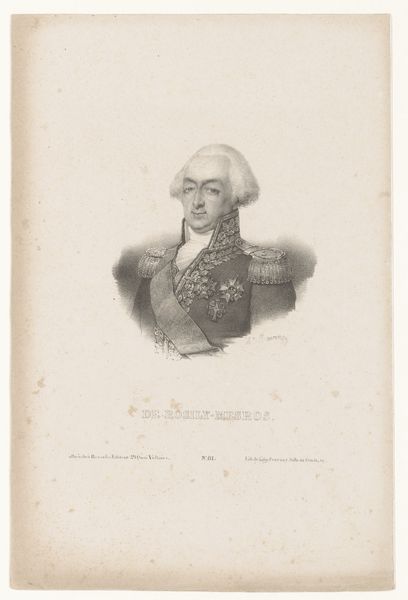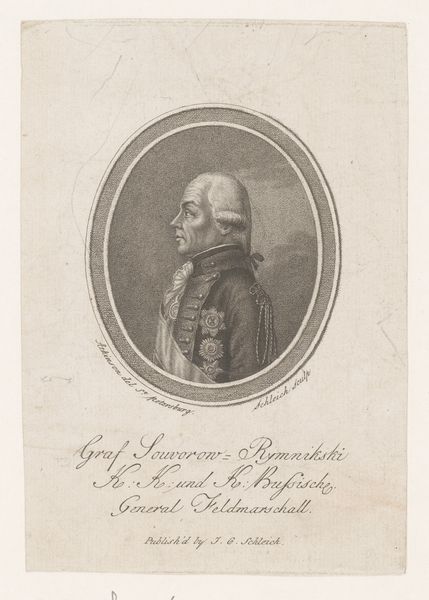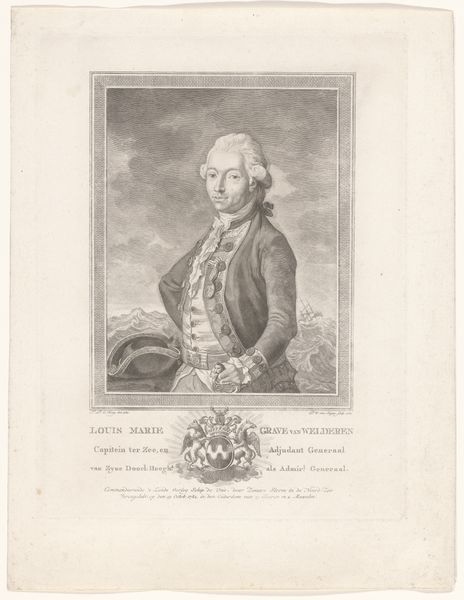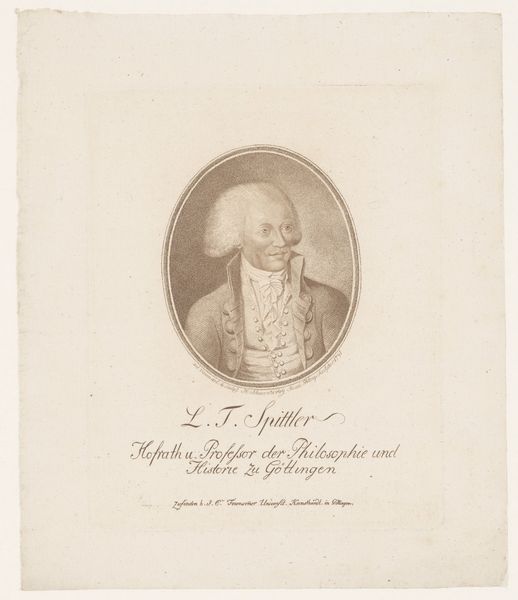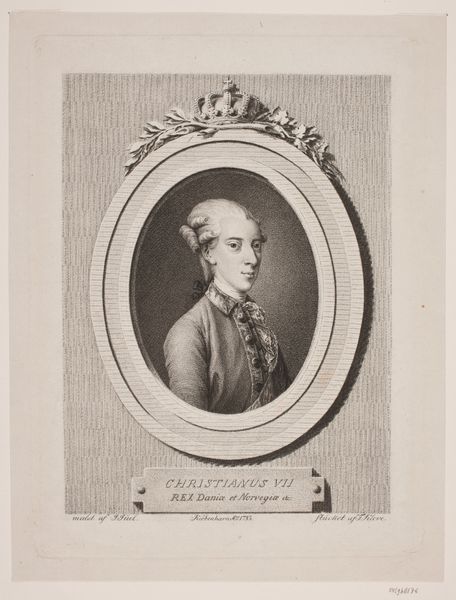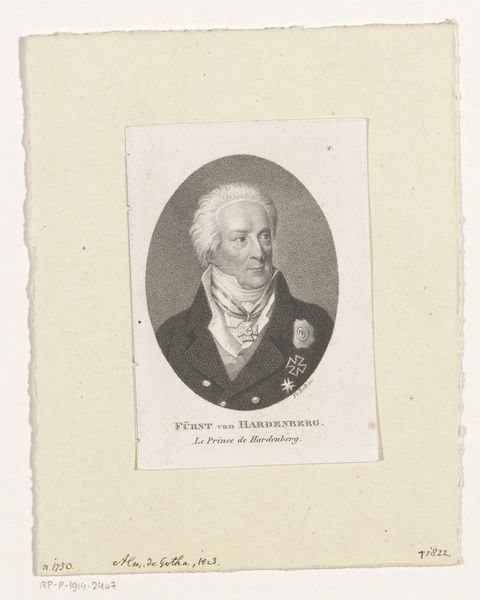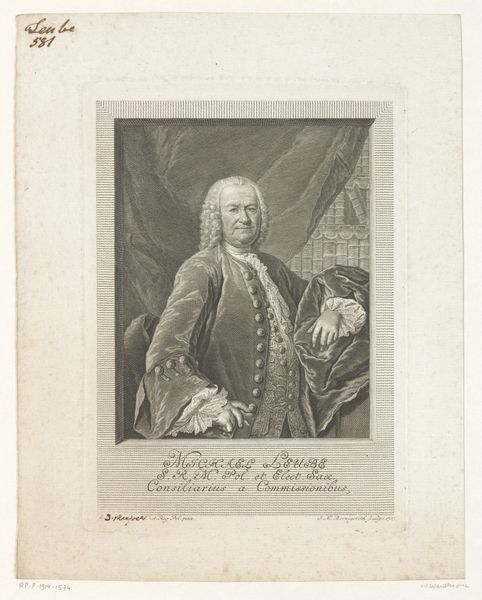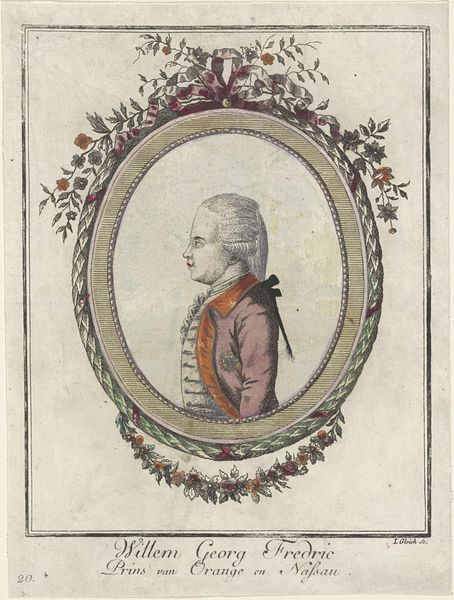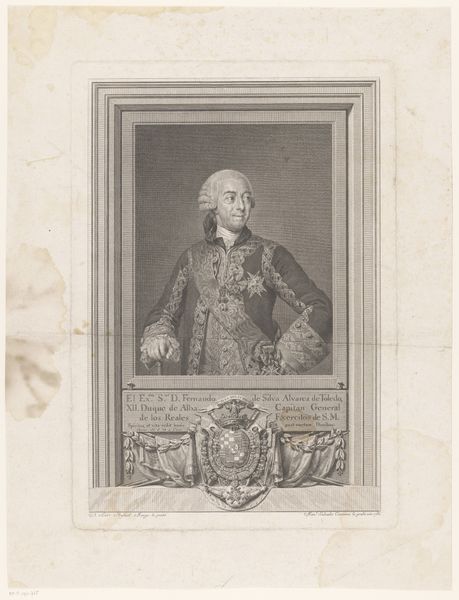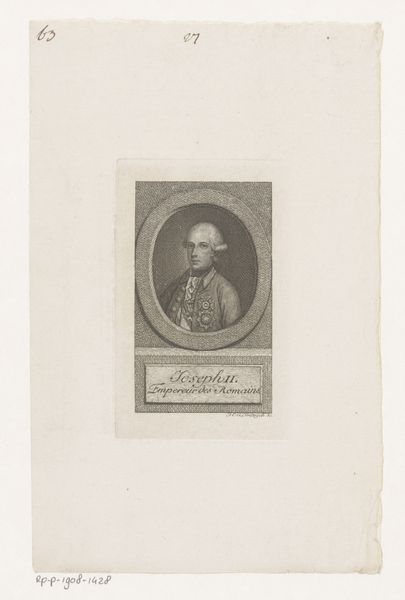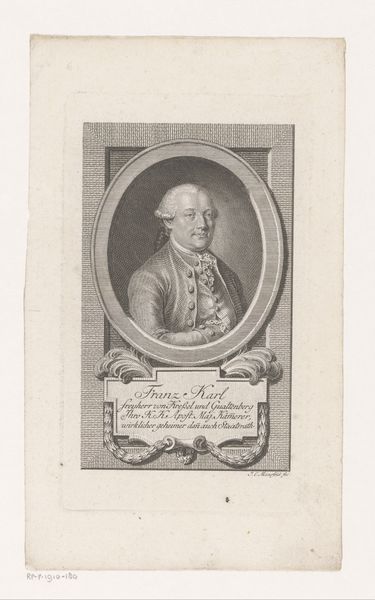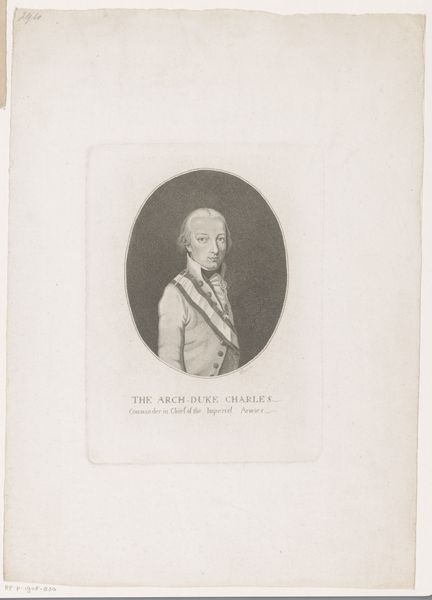
print, engraving
#
portrait
#
neoclacissism
# print
#
history-painting
#
academic-art
#
engraving
Dimensions: height 287 mm, width 204 mm
Copyright: Rijks Museum: Open Domain
Curator: This is a print titled "Portret van Frans II" or "Portrait of Francis II," dating from the period of 1778 to 1835, attributed to Franz Valentin Durmer. It’s an engraving. Editor: The coolness of tone in this portrait is striking. It presents an air of very measured, perhaps even repressed, authority. The grey tones enhance the sense of distance, doesn't it? Curator: Absolutely. As a Neoclassical piece, it adheres to conventions. Notice the oval frame containing the subject, a common feature suggesting both containment and classical allusion. The trappings of state, like his medals and coat of arms, assert the sitter's rank, but don't you feel it lacks the grandeur of some earlier royal portraiture? Editor: Perhaps, but there’s something inherently interesting about this particular rendition of power. The way Francis holds his hand, seemingly offering something, yet maintaining a tangible distance. It’s not overtly majestic, reflecting broader shifts in the understanding of leadership during the late 18th and early 19th centuries as society edged into modernity. What symbolic meaning did the artist instill? Curator: Symbolically, of course, we have the Hapsburg double-headed eagle, representing the Emperor’s dominion over multiple realms, visually unifying his titles: Emperor, King of Bohemia, Austria, and more. The restrained expression would surely be calculated— projecting both strength and reason in an age defined by Enlightenment ideals clashing with inherited authority. Editor: It's also worthwhile considering what was happening at the time in history and politics and to interpret those choices. As revolution swept Europe, the depiction of rulers started reflecting a new imperative: to appear rational, in control, yet aware of their place in the rapidly changing political climate. How would the public view these images at the time? Curator: That's a shrewd point. The circulation of prints like this allowed for wider dissemination of the emperor's image, helping to shape public opinion, an early form of image control if you like. Academic art served definite social and political purposes. Editor: It’s really captivating how much these carefully crafted images can tell us not just about the sitter, but about the evolving politics of visual representation and power. Curator: Indeed. It's a poignant reminder that even the most formalized portraits reveal a complex web of artistic intention, political context, and the shifting sands of cultural perception.
Comments
No comments
Be the first to comment and join the conversation on the ultimate creative platform.
